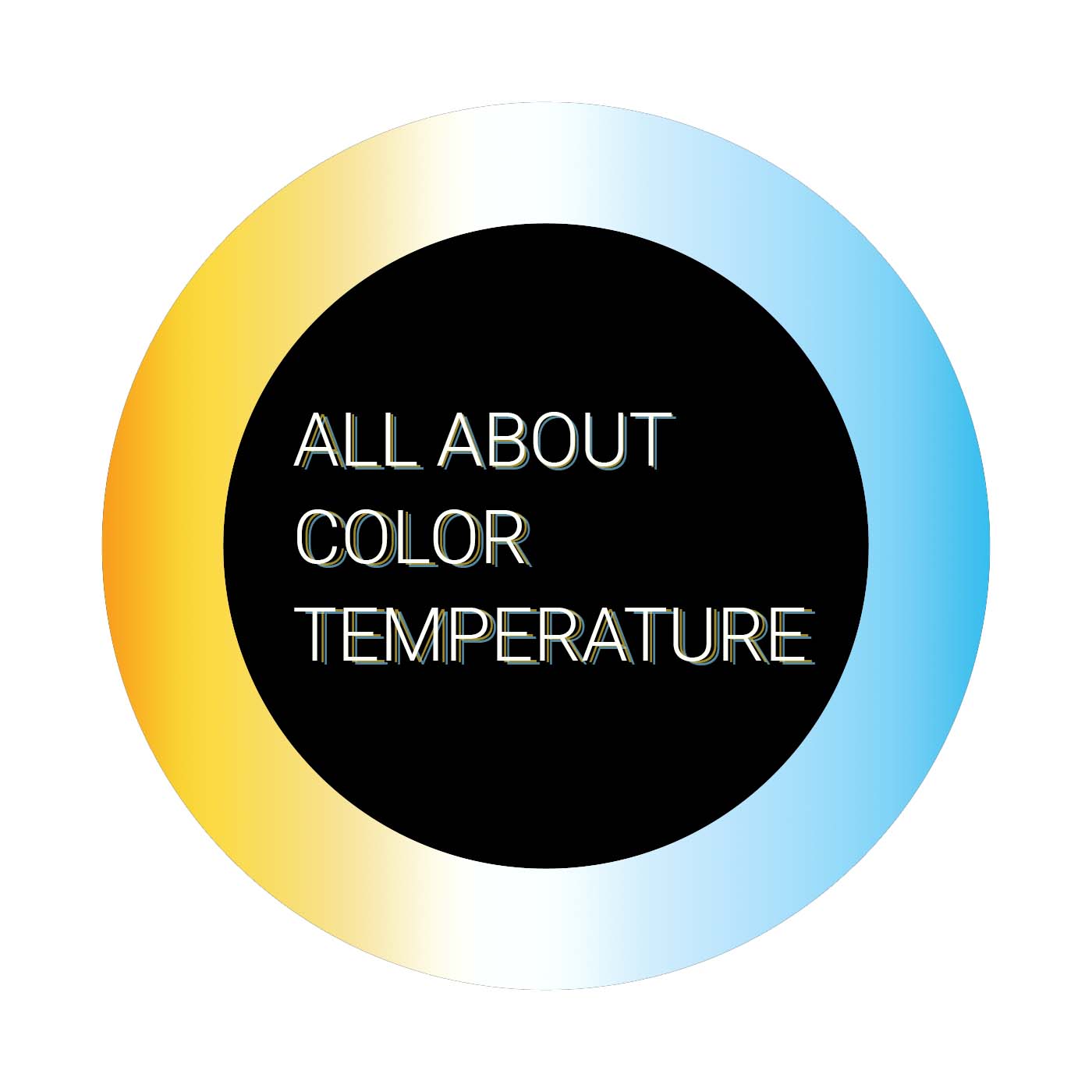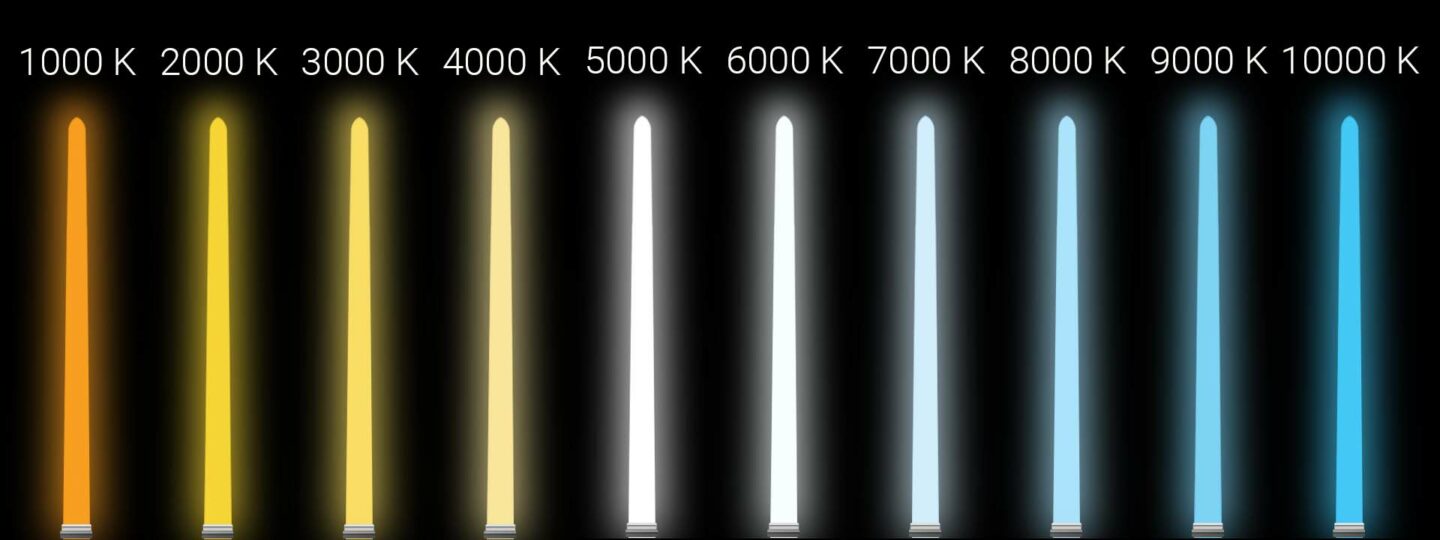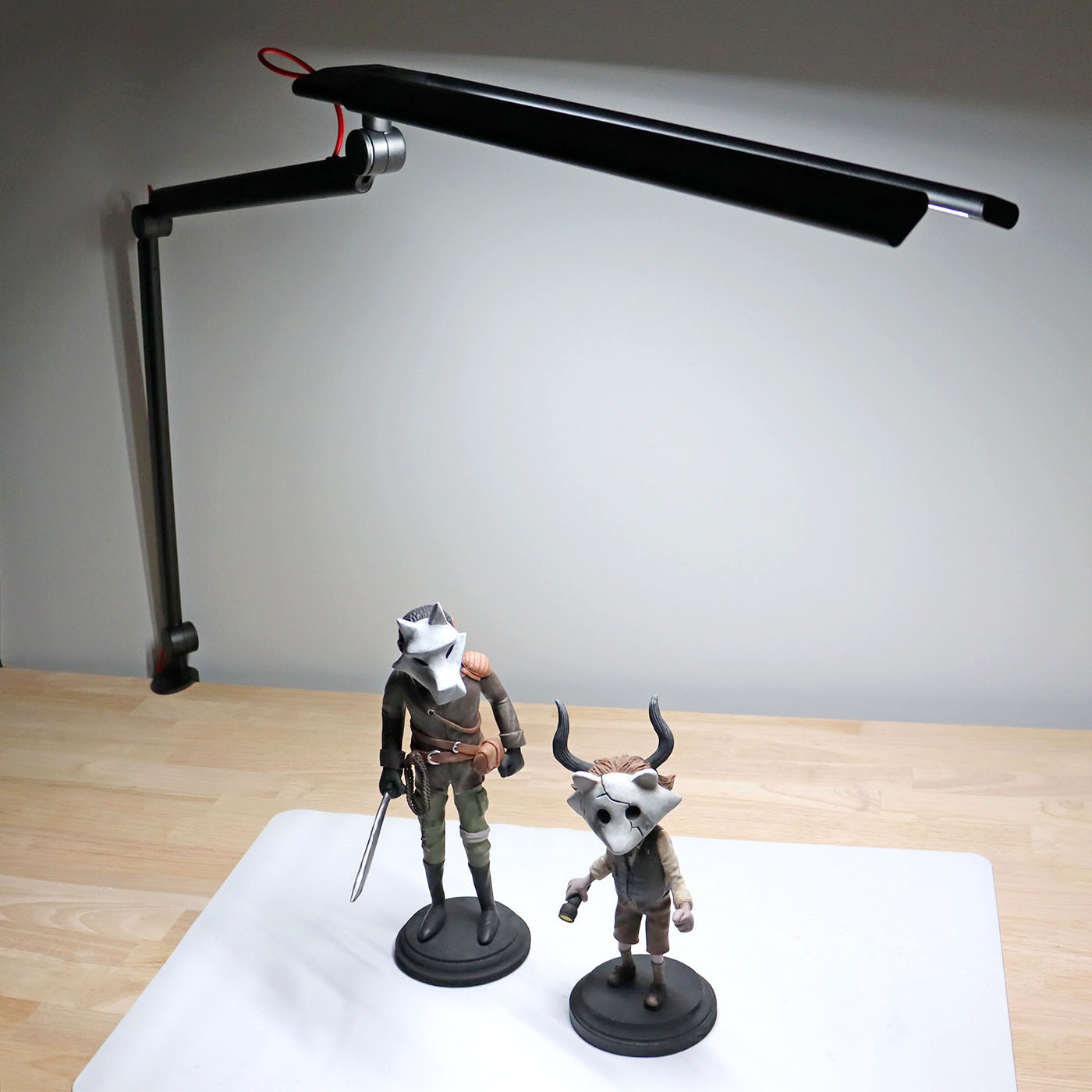
Color Temperature (Kelvin): Everything you need to know

We need adequate illumination when working on important projects. Not only does it help us stay focused, but it also boosts our cognitive performance.
Besides knowing about lumens, shape, voltage, and bulb watts, it’s also imperative to understand the impact of color temperature on the light. Color temperature measures the warmth or coolness of a light source and is measured in degrees Kelvin (K).
The color temperature of artificial light sources directly impacts your mood or space aesthetics. A dim light, for instance, produces a calming effect, while a bright light helps you stay alert. Besides, the color temperature may also affect your eye health.
Here’s a quick guide on different color temperatures and what they mean to help you pick the right bulb or lamp next time you hit the store.
Color Temperature: Everything You Need to Know
Color temperature indicates the hue of a particular type of light. The lower the color temperature, the more yellow or red the light appears. The higher the color temperature, the bluer the light appears.
In simple words, it is a method used to describe the color characteristics of light sources, from coolness to warmth.
The color temperature spectrums are assigned numbers that are measured in Kelvin (K). The same value is used to describe the color released from lighting fixtures in commercial and residential areas.
Understanding the Kelvin Scale: Unit of Thermodynamic Temperature
The Kelvin scale was named after a British Physicist Lord Kelvin. It is the SI base unit of thermodynamic temperature, and its magnitude equals the Celcius degree. It helps measure a light bulb’s color temperature. For instance, a higher kelvin rating indicates a bluer light.
Most people are more familiar with Celsius and Fahrenheit scales.
The Kelvin scale is widely used in science, given its powerful concept. In everyday life, we refer to it as a light bulb’s color temperature. It tells us what a bulb’s light looks and feels like.
The Kelvin color temperature is based on the concept of heating of an abstract reference point termed “black body radiator.” As the black body temperature rises, it absorbs and later emits the energy.
Incandescence is when an object is heated unless it glows or emits light. So, once the temperature of the black body radiator goes up, the object starts to glow.
If we increase the heat at this point, we’ll notice the shift between colors, from red to orange and yellow to white.
This shift shows incandescent radiators radiating light energy at different wavelengths. These radiators define the color temperature. It provides a hassle-free way to measure the light spectrum radiated by an object using its temperature as a reference.
So, whenever we hear the word color temperature, it describes this measurement. For instance, 5600K on color temperature refers to the measurement of light coming from direct sunlight.
Different Color Temperatures and Light Sources

Although the Kelvin scale runs from 1000-10,000K, the lights we typically use for commercial and residential areas fall into the following bands.
2000-3000K. A soft white color, often yellowish in appearance. It is ideal for dining rooms, outdoor spaces, and living rooms.
3000-4500K. A bright white light. Such light is ideal for workspaces, kitchens, offices, or other places requiring task lighting.
4600-6500K. A natural white to white-blue light perfect for illuminating work environments requiring bright light.
Let’s take a closer look at different color temperatures and what they’re ideal for.
1000-1900K
The start of the temperature scale would be rather black. So, let’s begin from 1900K. Fire and candle flames usually fall on this temperature scale, giving off a warm, yellowish light.
2000-2500K
The 2000-2500K scale produces colors typically described as warm white.
Generally, street lights are adjusted at 2000K. So, they aren’t too warm, nor too harsh. The 2000K scale emits perfect calm light that is easy on the eyes.
Further, the light seen right after sunrise or sunset is also warm light (around 2000K).
2800-2900K
As we move from the calm and warm white light of 2000K, we head into the 2800-2900K region. We may describe it as the color temperature seen in lighting at our homes.
Typical ceiling and lamp lights are at 2800-2900K temperature scale.
3200K
These temperatures are typically used for photography and filmmaking purposes for interior scenes at night. Besides, halogen bulbs installed in Fresnel lamps also sit at 3200K.
3500-4000K
The 3500-4000K scale no longer gives off warm white but rather bright white light. In fact, the temperature falling at 4000K is also often called neutral white.
The color temperature of fluorescent lights is generally between 3500-4000K. They are white and do not sit on the warm or cool side of the scale.
This color temperature is typically seen in retail outlets, offices, and restaurant kitchens. Essentially, any place where colors need a natural appearance.
4100K
The 4100K light is rather confusing because the sun falls in cold color despite being the hottest; the same goes for moonlight. The color temperature of moonlight is 4100K – a scale warmer than the sun. However, we generally consider moonlight as cold.
4500-4900K
The sun is yet to reach its peak in the late afternoon and early morning. However, it isn’t as horizontal as it is during sunset or sunrise. So, this light is slightly warm but less bright than midday light. Besides, it isn’t as golden as the sunset.
This light sits at a 4500-4900K scale. There’s another similar light that typically exists at 5000-5500K (the light of the camera’s flash), and we’ve all seen it once, if not the typical daylight.
5000K
5000k is considered as natural white and is widely used by artists, photographers as the best color temperature to work with. It is actually the optimum compromise when performing color critical tasks as it offer a neutral ground between warmer lights in the 2700k to 4500k range and the colder lights in the 5600k to 6500k range. It usually is the best choice for a desk lamp and considered as standard in the art industry.
5600K
This is the light color at a peak midday sun without clouds covering it. It is also considered as a neutral white, with a slightly bluish tint.
6500-7000K
The light falling at the 7000K scale is too blue to be seen in the actual world. However, we can consider it the daylight color when the sun waves are diffused through dense clouds.
9000K
9000K and onward is a color temperature of a clear blue sky.
What to Know About Color Temperature Before Selecting Lights?
You’ll find different shades of energy-efficient light sources on the market, from warm white to cool white bulbs.
Their names signify that the two bulbs emit lights of different shades. However, this difference primarily exists because of different color temperatures.
In lighting jargon, the technical term for color temperature is the Correlated Color Temperature (CCT), described in Kelvins.
Understanding the negative relationship between warmth emitted from a light source and the color temperature is crucial. Simply put, a higher Kelvin scale does not indicate that a light source will emit warm white light.
Instead, a higher color temperature will make the light appear cooler. Likewise, lower color temperature will give off a warmer light glow.
The Affect of Color Temperature
The story doesn’t end after you understand the inverse relationship between color temperature and the light a bulb gives off. Color temperature also affects space aesthetics.
For instance, a warm light conveys a welcoming and inviting vibe. Therefore, entrepreneurs prefer installing warm white lights in their commercial buildings to make the guests feel welcomed.
As a business owner, you may prefer color temperatures between 2700K-4100K. However, those seeking to maintain their focus and stay alert during particular desk tasks need a higher color temperature.
For instance, if you’re into painting, drawing, art, and graphics or prefer working at your desk for office projects, you’d need a light that sits at 4000k-6500K.
The RedGrass R9 Desk Lamp is the perfect addition to your workplace in this regard. The lamp illuminates your whole work desk by offering up to 5800 lux of light. Plus, there’s no glare or flickering, keeping your eyes safe from strain and fatigue. You can buy the lamp in 5000, and 6500 Kelvin variations.
Our Perception Of Color Temperature Brightness
Generally, we perceive a high kelvin temperature as brighter than a low kelvin temperature. The light source will appear brighter when it gets closer to the sun’s range. This explains why most commercial and industrial properties prefer energy-efficient light bulbs or LEDs around 5000K or more.
The better a commercial building light mimics daylight, the better it illuminates spaces like stairways, sports fields, gas stations, etc. Not only do we perceive the light as brighter, but it also uses minimal energy to achieve high brightness levels.
5000k Color Temperature, the Best for Details
The primary reason you need a brighter light is to see the tiny details of your project. Say you’re working on a miniature painting. You’d need a light that illuminates minor details of your work to give the perfect finishing touch and fill the gaps that complement your effort.
So, lights around 4000-6500K are perfect for illuminating your desk and completing your work hassle-free.
This also explains why jewelry shop owners used brighter light to cast light on the finer details of their products. Likewise, business owners may install high color temperatures to display objects more clearly outside or inside the building.
FAQs
Why Is Color Temperature Important?
The color temperature significantly affects the feel and appearance of a space. Therefore, selecting the right color temperature is important to create a specific mood.
For instance, you may want to create a warm ambiance in your bedroom, unlike your work room which looks better in a cooler color temperature (to boost focus).
On a side note, higher color temperature gives off energizing light (better for handling intricate tasks and observing finer details)
Why Is Kelvin Used Instead of Celsius?
The changes in Celsius aren’t related to volume or kinetic energy because it doesn’t start at zero. Therefore, scientists prefer using Kelvin because it directly relates to volume and kinetic energy. Plus, it begins at absolute zero.
What Is Color Rendering Index (CRI)?
The Color Rendering Index (CRI) determines the accuracy of colors under different light sources. For instance, 100 CRI indicates the most accurate light. However, typical lighting bulbs have a CRI of around 80. Therefore, if you need a light for handling tasks where color is important – think painting – go for a bulb with CRI 95 or more.
Luckily, Redgrass R9 Desk Lamp offers CRI 98+, allowing you to handle your delicate tasks efficiently.
Which Color Temperature Is the Best?
Your needs determine the best color temperature. Different color temperatures exist to cater to your unique needs.
This doesn’t mean that one is better than the other. For instance, if you seek warmer color temperatures to create a relaxing atmosphere in your dining room, consider lighting between 2700-3500K. However, those seeking to protect their eyes when using computer screens, painting, or working on projects must opt for lighting at 5000K.
What Color Temperature Is Easy On the Eyes?
When buying one, we all pay attention to a light bulb’s energy efficiency and quality. However, the color temperature often goes unnoticed.
Knowing the right color temperature is crucial to choosing the ideal light bulb for your needs. It will protect your eyes and let you achieve the desired mood in your living room, commercial building, or workspace.
Final Words
When buying one, we all pay attention to a light bulb’s energy efficiency and quality. However, the color temperature often goes unnoticed.
Knowing the right color temperature is crucial to choosing the ideal light bulb for your needs. It will protect your eyes and let you achieve the desired mood in your living room, commercial building, or workspace.



